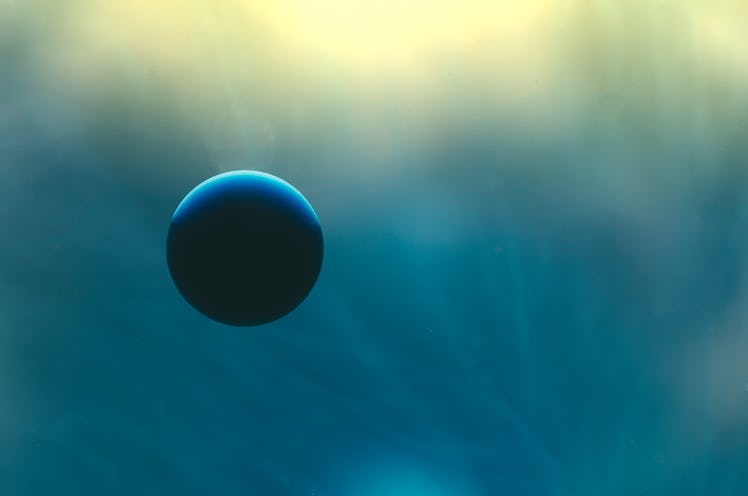
Here's Why The Naked Eye Can Enjoy The Super Blue Blood Moon In All Its Glory
Whenever a solar eclipse rolls around, a handful of intimidating precautions about the eye damage that can occur without proper eclipse glasses inevitably comes right along with it. So, with the extra special lunar eclipse on its way this Wednesday, Jan. 31, you might be wondering if you should follow any of those same eyewear guidelines. Are super blue blood moon glasses even a thing? Don't get me wrong, looking up at that big rock in the sky is going to be truly breathtaking, but keeping your eyesight intact is always a priority, fam.
First of all, let's break down what the super blue blood moon actually is. Like, I'm not purchasing any fancy eyewear if I don't even know what the hell I'm looking at. The fancy name basically means that the moon is going to be super close to the Earth, it'll be a blue moon (or the second full moon of the month), and it'll be slightly tinted red, which is the bonus of the "blood" part ("blood moon" is also another way to refer to a lunar eclipse).
So, back to the fancy eyewear thing: Do you need to whip out those same glasses you used for the solar eclipse back in August 2017 when the lunar eclipse comes out to play on Jan. 31?
Just in case you forgot, during a solar eclipse, special viewing glasses are required for overall eye safety and protection from the harmful sun rays. According to Space.com, these lenses are made from solar filters that are hundreds of thousands of times darker than your typical RayBans.
But during a lunar eclipse, like in the upcoming super blue blood moon, it's totally unnecessary to shield your eyes in any way. Yep, your nakey eyes will be totally fine to stare at the spectacular, crimson-tinted moon as long as your little heart desires, my friend — no protection required.
According to Travel + Leisure, there will be various stunning phases to the super blue blood moon, including a partial phase (meaning only part of the moon passes through Earth's shadow) and a total phase (meaning the entire moon passes through the shadow). But no matter the phase, your eyesight will be totally fine sans fancy eyewear, so quit worrying. The nighttime spectacle is nothing like a solar eclipse in that aspect.
Sadly, not everyone will be able to see the impressive lunar trifecta in full, but there are plenty of ways to catch a glimpse of the super blue blood moon.
According to Vox, if you're located on the east coast, the best time to look out for the super blue blood moon is 6:48 a.m. ET — early risers, unite! However, even then, you'll most likely only be able to view a partial eclipse. Sorry, fam.
On the other hand, if you're on the west coast during the super blue blood moon's big show, a view of the full eclipse will be available for your gazing pleasure. I would be seething with jealousy over here, if not for the fact that, in order to see the full glory of this lunar event on the west coast, you'll have to set your alarm for a 4:51 a.m. PT wake-up call. I officially retract my "early risers unite" comment. I consider myself a morning person, but even so, getting out of bed before 5 a.m. makes me nauseous.
No matter where you are, though, or what lengths you'll go to so that you'll be able to see the super blue blood moon, NASA will be graciously live-streaming the whole event starting at 5:30 a.m. ET, so that you'll have the option of viewing the total lunar eclipse from the cozy warmth of your bed. Bless you, NASA.
So, whether you're bravely venturing outside in hopes of seeing the crimson moon, or you decide to watch live coverage from California and Arizona on your laptop screen, this rare occurrence won't be something you want to miss.